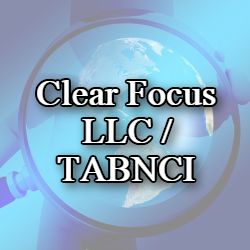A compelling business plan is more than a document—it’s a strategic blueprint that communicates your vision, aligns your team, and attracts investors. Whether you’re launching a startup or scaling an existing enterprise, a well-structured plan can be the difference between success and stagnation. This guide outlines essential components and practical tips to help you create a business plan that resonates with stakeholders and drives your business forward.
- Executive Summary: Your Business at a Glance
Begin with a concise executive summary that encapsulates your company’s mission, product or service offerings, target market, and financial highlights. This section should provide a snapshot that entices readers to delve deeper into your plan.
- Company Description: Define Your Identity
Detail your business’s legal structure, history, objectives, and the unique value proposition that sets you apart from competitors. Clearly articulating your company’s identity helps stakeholders understand your purpose and potential.
- Market Analysis: Understand Your Environment
Conduct thorough research to analyze industry trends, target customer demographics, and competitive landscape. This analysis demonstrates your market knowledge and readiness to navigate challenges.
- Organization and Management: Structure for Success
Outline your organizational structure, detailing the roles, responsibilities, and backgrounds of your management team. Highlighting a competent team instills confidence in your business’s operational capabilities.
- Products or Services: Showcase Your Offerings
Describe your products or services, emphasizing their benefits and how they meet customer needs. Include information on the product lifecycle, intellectual property, and research and development activities.
- Marketing and Sales Strategy: Plan for Growth
Explain how you intend to attract and retain customers. Detail your marketing channels, sales tactics, and customer engagement strategies. A clear plan demonstrates your approach to market penetration and revenue generation.
- Financial Projections: Present the Numbers
Provide financial statements, including income statements, cash flow statements, and balance sheets. Offer projections for the next three to five years and include a break-even analysis. Accurate financial forecasting is crucial for securing investment and guiding business decisions.
- Appendix: Supplementary Information
Include any additional documents that support your business plan, such as resumes, legal agreements, product images, or detailed market studies. An organized appendix allows interested parties to explore specific areas in more depth.
Pro Tips for a Compelling Business Plan:
- Clarity and Conciseness: Use clear, jargon-free language. Aim for a plan that’s comprehensive yet concise to maintain reader engagement.
- Visual Appeal: Incorporate charts, graphs, and infographics to illustrate key points and data.
- Customization: Tailor your plan to your audience, emphasizing aspects most relevant to their interests, whether it’s profitability for investors or operational details for partners.
- Regular Updates: Treat your business plan as a living document. Regularly update it to reflect changes in the market, your business model, or financials.
Creating a compelling business plan is a foundational step in turning your business vision into reality. By thoughtfully addressing each component and leveraging available resources, you can develop a plan that not only guides your business strategy but also attracts the support and investment needed for success.
Gary Brunson
gary@myclearfocus.com
Debra Rider
debra@myclearfocus.com
574.361.2674
Sustainable Growth & Profit Consultant, Coach, Mentor, and Counselor/Therapist for Business Owners and Professionals.










